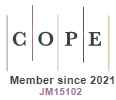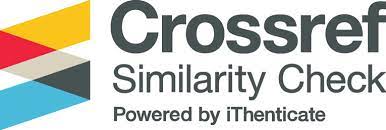The importance of socio-cultural factors as determinants of the attractiveness of the fintech sector offer for individual clients of banks
DOI:
https://doi.org/10.18778/2391-6478.1.45.07Keywords:
bank, fintech, offer, purchasing decisions, attractiveness determinantsAbstract
The purpose of the article. The aim of this publication is to analyze the importance of socio-cultural factors for assessing the attractiveness of the FinTech sector's offer among individual clients of the banking sector and the FinTech sector. The following hypothesis was put forward in the article: the average level of importance of socio-cultural factors for assessing the attractiveness of the FinTech sector's offer does not statistically differ significantly for individual customers of the banking sector and individual customers of both, the banking sector and the FinTech sector.
Methodology. In order to verify the adopted hypothesis and achieve the purpose of this publication, 240 direct individual questionnaire interviews (PAPI interviews – Paper & Pen Personal Interviews) were conducted among customers of the banking sector, and it should be noted that the study, due to the representativeness of the conducted research, involved:
• 120 individual clients of the banking sector who have not yet used the offer of the FinTech sector;
• 120 individual clients of the banking sector with experience in using the offer of the FinTech sector.
The questionnaire survey was preceded by in-depth interviews with experts, representatives of the scientific community professionally involved in research on the functioning of FinTech enterprises as well as owners and co-owners of business entities belonging to the FinTech sector.
Results of the research. Based on the conducted research, it was found that individual clients of the banking sector who had not yet used the FinTech sector's offer were more likely to agree with two statements, i.e., the stronger the bank client's sense of belonging to a selected social group, the higher the assessment of the attractiveness of the FinTech sector's offer and the stronger the bank customer's identification with family values, the higher the assessment of the attractiveness of the FinTech sector's offer. In the case of responses to the remaining statements, no statistically significant differences were noted. The result of the analyzes carried out in this article is a positive verification of the research hypothesis according to which the average level of importance of socio-cultural factors for assessing the attractiveness of the FinTech sector offer does not differ in a statistically significant way for individual customers of the banking sector and individual customers of the banking sector and FinTech sector.
Downloads
References
Adamowicz, M., & Krasuska, A. (2016). Komunikacja marketingowa a zachowania nabywców na rynku towarów konsumpcyjnych. Nierówności Społeczne a Wzrost Gospodarczy, 45(1). https://doi.org/10.15584/nsawg.2016.1.18
Google Scholar
DOI: https://doi.org/10.15584/nsawg.2016.1.18
Anderson, W. T., & Golden, L. L. (1984). Lifestyle and psychographics: A critical review and recommendation. Advances in Consumer Research, 11(1).
Google Scholar
Bartkowiak, P., & Sojkin, B. (2015). Wyznaczniki decyzji zakupowych towarów konsumpcyjnych mieszkańców Poznania i Wielkopolski. Ruch Prawniczy, Ekonomiczny i Socjologiczny, 77(1). https://doi.org/10.14746/rpeis.2015.77.1.18
Google Scholar
DOI: https://doi.org/10.14746/rpeis.2015.77.1.18
Bourdieu, P., & Wacquant, L. (1992). An Invitation to Reflexive Sociology. Polity Press.
Google Scholar
Cieloch, G., Kuczyński, J., & Rogoziński, K. (1992). Czas wolny czasem konsumpcji. PWE.
Google Scholar
Dąbrowska, A., & Janoś-Kresło, M. (2014). Zachowania zakupowe Polaków w świetle badań własnych. Problemy Zarządzania, Finansów i Marketingu, 36.
Google Scholar
Drozdowski, R. (2014). Polska u progu drugiej fazy modernizacji, czyli jak jednocześnie doganiać i uciekać. Ruch Prawniczy, Ekonomiczny i Socjologiczny, 76(2). https://doi.org/10.14746/rpeis.2014.76.2.7
Google Scholar
DOI: https://doi.org/10.14746/rpeis.2014.76.2.7
Garbarski, L. (1998). Zachowania nabywców. PWE.
Google Scholar
Janoś-Kresło, M., & Mróz, B. (2006). Konsument i konsumpcja we współczesnej gospodarce. Szkoła Główna Handlowa w Warszawie.
Google Scholar
Kieżel, E. (Ed.). (2000). Rynkowe zachowania konsumentów. Wydawnictwo Akademii Ekonomicznej w Katowicach.
Google Scholar
Korneta, P., & Lotko, A. (2021). Determinanty i modele zachowań konsumenta. Wnioski z przeglądu literatury. Marketing i Rynek, 9. https://doi.org/10.33226/1231-7853.2021.9.1
Google Scholar
DOI: https://doi.org/10.33226/1231-7853.2021.9.1
Kotler, P. (2005). Marketing management. Dom Wydawniczy REBIS.
Google Scholar
Kozłowska, A. (2016). Cele reklamowe. Weryfikacja założeń. Acta Universitatis Nicolai Copernici. Zarządzanie, 2. https://doi.org/10.12775/AUNC_ZARZ.2016.023
Google Scholar
DOI: https://doi.org/10.12775/AUNC_ZARZ.2016.023
Liczmańska, K. (2015). Kluczowe czynniki determinujące zachowania konsumenckie na przykładzie mieszkańców województwa kujawsko-pomorskiego. Zeszyty Naukowe Uniwersytetu Szczecińskiego. Problemy Zarządzania, Finansów i Marketingu, 41(2). https://doi.org/10.18276/pzfm.2015.41/2-09
Google Scholar
DOI: https://doi.org/10.18276/pzfm.2015.41/2-09
Maciag, T. J., Slezak, D., & Hepting, D. H. (2006). Consumer modelling in support of interface design. International Conference on Hybrid Information Technology (ICHIT’06), Cheju Island, South Korea.
Google Scholar
DOI: https://doi.org/10.1109/ICHIT.2006.253605
Mącik, R. (2016). Style podejmowania decyzji zakupowych a zachowania konsumentów w symulowanych zakupach w środowisku porównywarki cenowej. Prace Naukowe Uniwersytetu Ekonomicznego we Wrocławiu, 460. https://doi.org/10.15611/pn.2016.460.14
Google Scholar
DOI: https://doi.org/10.15611/pn.2016.460.14
Madeswaran, A. (2015). Consumer – The Boss (Essentials on consumer behaviour and marketing strategies). Archers & Elevators Publishing House.
Google Scholar
Morawiak, A. (2015). Społeczeństwo konsumpcyjne a zrównoważony rozwój konsumpcji. Prace Naukowe Uniwersytetu Ekonomicznego we Wrocławiu, 414. https://doi.org/10.15611/pn.2015.414.22
Google Scholar
DOI: https://doi.org/10.15611/pn.2015.414.22
Rajan, A. P., Sammansu, J. M., & Suresh, S. (2021). Consumer buying behaviour. International Journal for Science and Advance Research in Technology (IJSART), 7(7).
Google Scholar
Roy, P., & Datta, D. (2022). Theory and models of consumer buying behaviour: A descriptive study. Parishodh Journal, XI(VIII). http://dx.doi.org/10.2139/ssrn.4205489
Google Scholar
DOI: https://doi.org/10.2139/ssrn.4205489
Witek, L. (2007). Merchandising. W małych i dużych firmach handlowych. C. H. Beck.
Google Scholar
Zalega, T. (2012). Konsumpcja. PWE.
Google Scholar
Zjawin, J. (2018). Zachowania zakupowe pokoleń konsumentów w świetle rozwoju technologii. Marketing i Zarządzanie, 3(53). https://doi.org/10.18276/miz.2018.53-20
Google Scholar
DOI: https://doi.org/10.18276/miz.2018.53-20
Żelazna, K., Kowalczuk, I., & Mikuta, B. (2002). Ekonomika konsumpcji. Elementy teorii. Szkoła Główna Gospodarstwa Wiejskiego.
Google Scholar
Downloads
Published
How to Cite
Issue
Section
License

This work is licensed under a Creative Commons Attribution-NonCommercial-NoDerivatives 4.0 International License.














